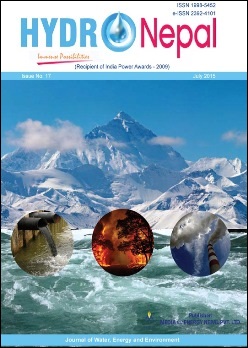Effect of Sand Erosion on Turbine Components: A Case Study of Kali Gandaki “A” Hydroelectric Project (144 MW), Nepal
DOI:
https://doi.org/10.3126/hn.v17i0.13270Keywords:
Sand erosion, Maintenance, Runner, Guide vanes, Facing plates, Labyrinth rings, HVOF coating, NepalAbstract
In high sediment laden river projects or silt affected power stations, the frequency of repair and maintenance of underwater parts is comparatively higher which leads to increase the overall forced outages per year for repair The extent of the major maintenance will depend on the operating condition such as suspended sediment load passing through the turbine and how the machine was loaded during the operation. This paper illustrates the analysis of sediments, effect of sand erosion and maintenance of turbine of Kali Gandaki “A” Hydroelectric Plant (144 MW). The paper also describes the repair methods used for different turbine components to minimize the effects induced by sediment erosion.
HYDRO Nepal Journal
Journal of Water, Energy and Environment
Issue: 17, July 2015
Downloads
Downloads
Published
How to Cite
Issue
Section
License
The copyright of the articles and papers published is held by HYDRO Nepal Journal.
The views and interpretation in this journal are those of author(s), and HYDRO Nepal does not bear any responsibility for the views expressed by authors in the journal.




